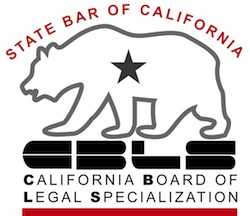Is bankruptcy worth it? If you see filing bankruptcy to get a fresh start as painful or less than honorable, you might wonder what life is like, on the other side of bankruptcy. What’s the return on taking the big step? I got a report from the other side this week from a Chapter 7 […]
Pay Off Credit Cards Without Interest: Bankruptcy For The Solvent
Once again, Chapter 13 rescued a client. He’ll get out of debt and pay off credit cards with no interest going forward. So many people tell me they could pay off the credit card balance if it wasn’t for the high interest. This client owned a home, had a job, and was solvent on paper, but […]
Getting Excused From Bankruptcy’s Means Test
You can skip the bankruptcy means test without claiming your dog ate your homework. If your debt is not “primarily consumer debt”, you don’t have to pass the means test to file bankruptcy. So, you need to total up the consumer debt you have and compare it to the rest of your debts. Don’t miss […]
Can You Spot The Signs Of A Collection Scam
It’s pretty scary when a $300 payday loan turns into an investigation by the Federal Crimes Bureau. Not only was the recipient of the collection letter below being “investigated for crimes”, his Social Security number would be suspended, and a court case initiated against him immediately. At great cost and embarrassment. Unless, of course, he sent the […]
Which Bankruptcy Chapter Is Right For Me?
Seven or Thirteen? 13 or 7? When you have a choice, how do you decide which chapter of bankruptcy works best? Usually, the choice is driven by the scope of the discharge and the kind of debts you have. More kinds of debts are dischargeable in Chapter 13 and the automatic stay protects you for the […]
Who Files Bankruptcy In The Face Of Booming Bay Area Economy?
Silicon Valley is booming; our highways are so full of people getting to work that we can’t get to work. Employment is approaching the level of the dot.com bubble. Property values are outrageous. So who files bankruptcy in this pocket of prosperity? All kinds of people, it turns out. Let’s look at the people who sought […]
New Bankruptcy Trends From An Old Hand
I’m seeing a real change in the people seeing me about filing bankruptcy. Used to be, the problem was credit card debt, unemployment, or divorce. A surprising trend over the past six months is developing. I acknowledge the sample size is small. Statistically, you can challenge the significance, but here are the trends. My office is […]
California Homestead Exemption: The Truth Isn’t What You Think
“They can’t take my house, whatever happens. Right?” The young man in my office “knew” how the California homestead works: he insisted that his home was exempt as a California homestead, even if he filed bankruptcy. He “knew” that credit card debt was dischargeable. And that “knowledge” lead to his conviction that , in bankruptcy, […]
When Can I File Bankruptcy Again
You can file bankruptcy tomorrow, so long as you don’t currently have a bankruptcy case pending. When you can get a discharge in that case is a different story. The Bankruptcy Code limits the frequency of getting a discharge, not the filing and completion of the bankruptcy case. My friend Gene Melchionne wrote a marvelous […]
$7000 Off The Price Of The Car In Chapter 13
How would you like to reduce your car payment, by lots? In a recent case, Chapter 13 allowed my client to save $7000 off the loan balance based on an examination of the car finance contract. You couldn’t see the issue from the monthly statement. When I got the finance agreement itself, I found the […]










